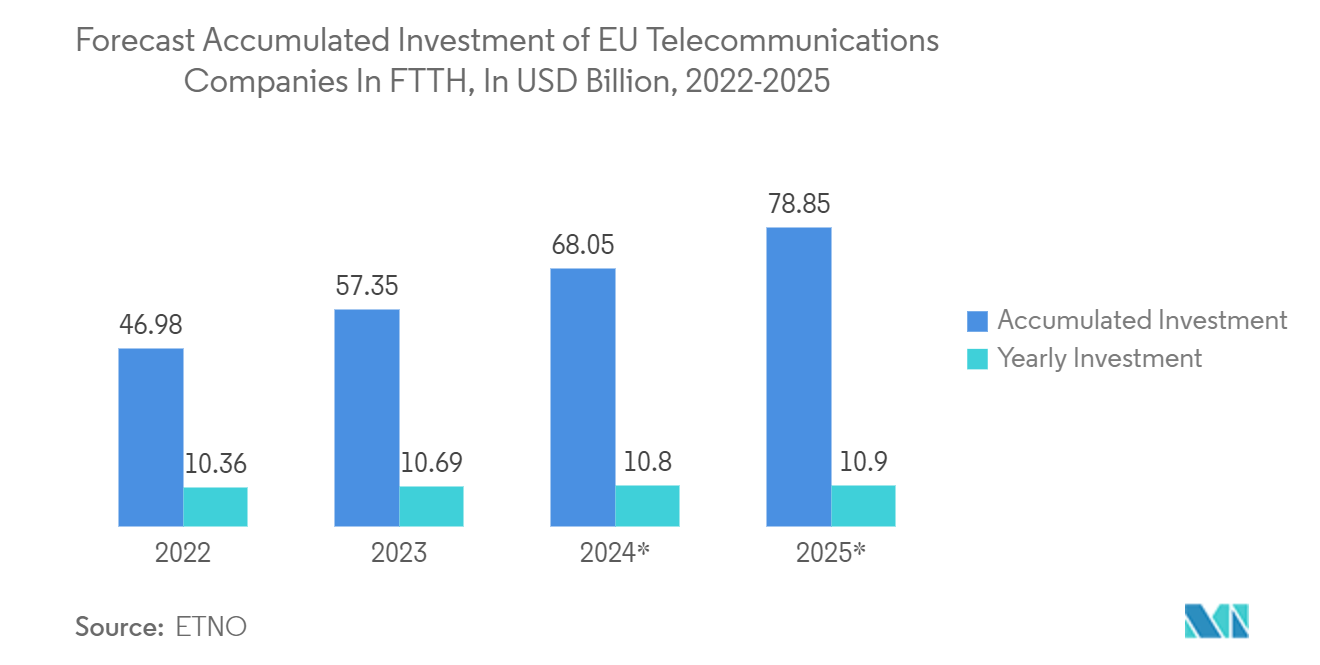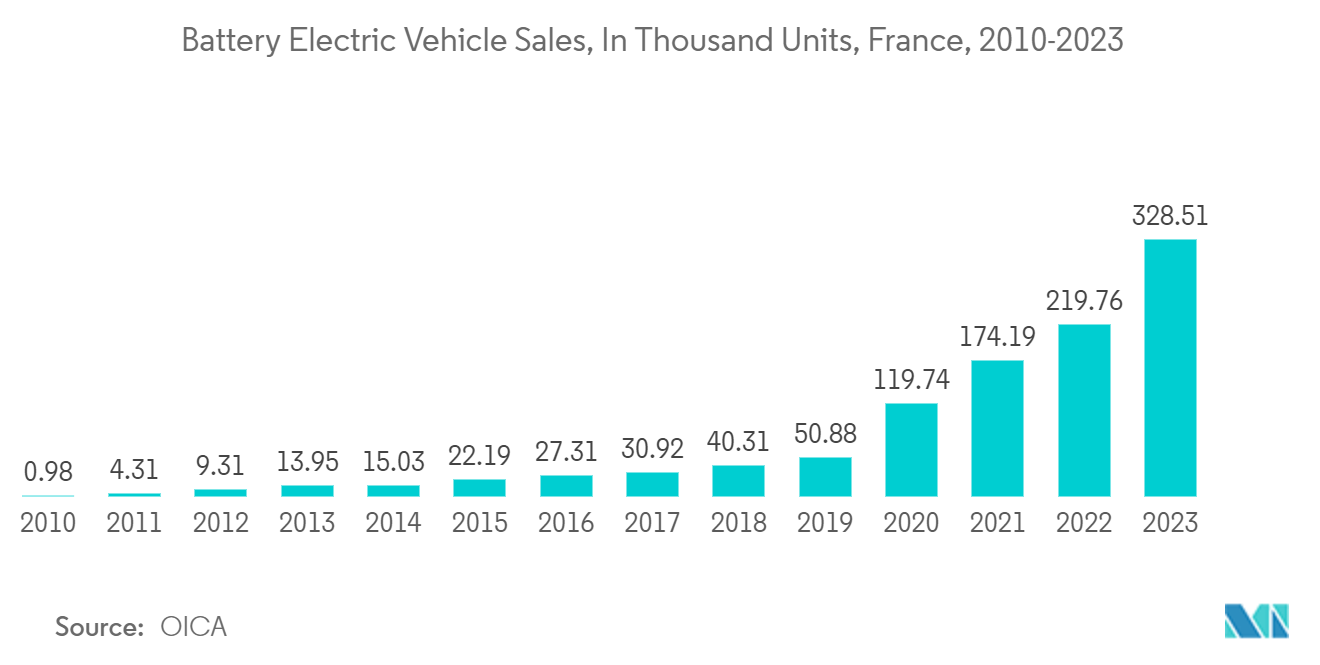Market Trends of Europe Semiconductor Device Industry
Communication Sector to be the Fastest Growing End-user Vertical
- Semiconductors are pivotal in communication systems, facilitating the production of essential components such as transistors, diodes, and integrated circuits. These components are instrumental in signal processing, amplification, and modulation. Wired communication devices encompass Ethernet controllers, adapters, and switches, alongside Power over Ethernet (PoE) interface controllers tailored for Voice over Internet Protocol (VoIP) and powerline transceivers. Traditionally, copper, known for its electrical conductivity, dominated telephone line materials. The industry is pivoting toward fiber optics to bolster bandwidth. Fiber optic technology is crafted from various semiconductors, including photodetectors and LEDs.
- In wireless communication, semiconductors are used in microwave, infrared, satellite, broadcast radio, mobile communications systems, Wi-Fi, and technologies such as Bluetooth and Zigbee. System-on-chip (SoC) and field-programmable gate array (FPGA) devices drive the evolution of wireless communication systems, notably 5G. Meanwhile, low-energy microcontrollers (MCUs) are pivotal in enhancing Bluetooth functionalities.
- Wireless sensor networks find applications in diverse fields, from environmental and structural monitoring to asset tracking. Furthermore, with the rapid advancement of communication technologies, wireless applications are poised to expand and redefine how consumers communicate, bolstering market growth both presently and in the future.
- According to ETNO, the total cumulative investment in FTTH is expected to surge to EUR 83.1 billion (USD 78.85 billion) by 2025, with an annual investment of EUR 10.1 billion (USD 10.90 billion). Such ongoing investments in high-speed fiber optic broadband networks across Europe drive the demand for semiconductor devices. These devices include optical transceivers, photonic integrated circuits, and signal processing chips, which are crucial for fiber optic communication equipment.

France Expected to Witness Major Growth
- The "France 2030" plan, designed to bolster the nation's industrial sovereignty, particularly in sectors like semiconductors, is a cornerstone of France's strategic vision. French companies are tapping into public aid programs, notably the European IPCEI ME/CT initiative, to fortify their production and research capabilities. Moreover, France is leveraging EU initiatives, such as the Chips Act, to ramp up semiconductor production across Europe.
- In a bid to spearhead semiconductor R&D, the French Government has upped its financial backing for research institutions and universities with a keen eye on next-gen technologies.
- Notably, CEA-Leti, a prominent nonprofit semiconductor research entity in France, plays a pivotal role in bridging the gap between theoretical research and practical industry applications. Similar organizations dotting Europe include Belgium's IMEC, Finland's VTT Technical Research Center, Germany's Fraunhofer Society, and Spain's Tecnalia. It's worth noting that CEA-Leti operates under the umbrella of a larger governmental body, the French Alternative Energies and Atomic Energy Commission (CEA).
- The automotive sector is a major driver of the semiconductor demand in France. With the French Government's push for a greener economy and the EU's stringent emission regulations, automakers are increasingly integrating advanced semiconductor technologies into EVs and hybrid vehicles. According to data published by OICA, 1.5 million cars were manufactured in France in 2023. This marked a continuous increase since 2020, after a drastic fall in 2019.
- Moreover, as per Avere France data, 328,512 electric cars were registered in France in 2023. This represents a significant increase from the 2022 level and an upward trajectory since 2011. Between 2019 and 2020, BEV registrations more than doubled.


